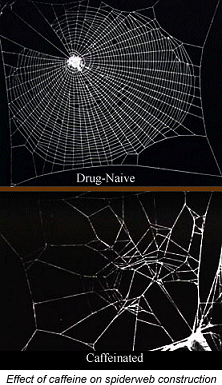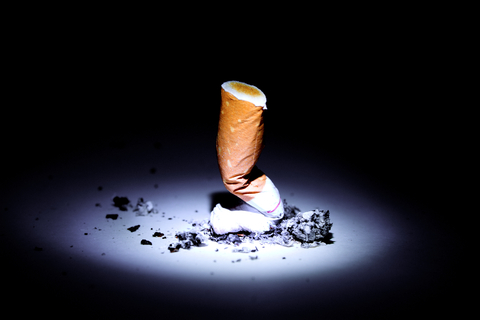Caffeine Addiction & Rehabilitation
Caffeine is easily the most popular drug in the world. We consume caffeine in coffee, tea, cocoa, chocolate, some soft drinks, and some drugs. The source of caffeine is the coffee bean, tea leaf, kola nut and cacao pod. Pure caffeine is odorless and has a bitter taste.
Caffeine Detox
Caffeine addiction is common and goes unnoticed because of its widely socially advocated use. Most of our patients addicted to caffeine are also addicted to other more harmful substances. When detoxing people from other substances we also include caffeine. To us it is important to include all addictive substances in the detox protocol so that cravings for a mood altering substance may not be perpetuated and the reversal of drug dependency is achieved in a more radical and definite way. Caffeine detox can cause severe headaches for up to three days when it is abruptly withdrawn. If possible, we ask our patients to taper down their caffeine intake prior to their visit to our retreat center to avoid these withdrawal symptoms.
Caffeine Toxicity
Caffeine is a central nervous system stimulant. In moderate doses, caffeine can:
- Increase alertness
- Reduce fine motor coordination
- Cause insomnia
- Cause headaches, nervousness and dizziness
In larger doses caffeine can be responsible for:
- Insomnia
- Anxiety
- Caffeine induced psychosis
- Worsening of hypertension
In massive doses, caffeine is lethal. A fatal dose of caffeine has been calculated to be more than 10 grams (about 170 mg/kg body weight) – this is the same as drinking 80 to 100 cups of coffee in rapid succession – not an easy thing to do.
Caffeine enters the bloodstream through the stomach and small intestine and can have its effects as soon as 15 minutes after it is consumed. Once in the body, caffeine will stay around for hours: it takes about 6 hours for one half of the caffeine to be eliminated.
Caffeine belongs to the xanthine chemical group. Adenosine is a naturally occurring xanthine that acts in the brain to suppress mental activity. There is evidence to suggest that adenosine’s inhibitory purpose in the brain serves as protection from the damage that can result from too much activity1. Caffeine exerts its effects on the brain at least in part by competing with and inhibiting adenosine, increasing brain activity and decreasing blood flow. Caffeine also acts at other sites in the body to increase heart rate, constrict blood vessels, relax air passages and improve breathing.
Caffeine Withdrawal Symptoms
The opposite of the above effects are what we experience with the caffeine withdrawal. Typical withdrawal symptoms associated with caffeine are headache, fatigue and muscle pain. With regular caffeine use, the body ramps up its production of adenosine receptors in an effort to continue the necessary regulating effects of adenosine. It takes the body approximately three days to change these concentrations back to normal. Typically withdrawal symptoms last between 2 and 9 days2.
Caffeine is highly addictive. Quitting coffee can cause withdrawal symptoms such as headaches, sleepiness and irritability.
Other Effects
 While caffeine is considered a relatively benign drug, its effects can be disturbing. The picture shows the effects on the organization skills of an orb-weaving spider, and some caffeine addicts describe a similar sense of scatteredness. Daily coffee can be dehydrating, which itself can cause fatigue. Many report an eventual increase in energy and well being when freed from the coffee cycle. While the person who comes to us for caffeine addiction alone has yet to come, we have helped many people who were addicted to coffee as a secondary addiction.
While caffeine is considered a relatively benign drug, its effects can be disturbing. The picture shows the effects on the organization skills of an orb-weaving spider, and some caffeine addicts describe a similar sense of scatteredness. Daily coffee can be dehydrating, which itself can cause fatigue. Many report an eventual increase in energy and well being when freed from the coffee cycle. While the person who comes to us for caffeine addiction alone has yet to come, we have helped many people who were addicted to coffee as a secondary addiction.
Acidity of Coffee
The acidic nature of coffee can lead to stomach ulcers. When the excess acid enters the bloodstream, it also increases calcium loss in urine. Both coffee and tea have no nutritional value. Tannin, the substance that makes tea cups brown and coats tea pots, is used for tanning leather. Imagine the stomach after twenty years of tea drinking.
n a survey, the four top reasons for people quitting coffee were: central nervous system disorders, 39%; gastrointestinal problems, 37%; to break the addiction, 19%; and fibrocystic breast tumors, 15%.
Caffeine Penetration
Caffeine is able to penetrate deep into vital tissue. Evidence shows that it may be linked to male infertility and also birth defects by passing through the placenta. Drinking coffee during breast feeding will cause caffeine to be present in mothers’ milk.
Caffeine has a powerful effect on coronary arteries and the pulmonary and systemic vessels, causing a greater flow of blood to the heart muscle, but decreasing the flow of blood to the brain by constricting cerebral blood vessels. Caffeine can cause abnormally fast, abnormally slow and irregular heart beats. It also wreaks havoc on blood pressure, commonly producing hypertension. Coffee has been linked to heart disease, pancreas and bladder cancer, and hypoglycemia.
Specific Addictions & Rehabilitation
- Alcohol Abuse
- Benzodiazepines / Tranquilizers / Muscle Relaxers (Xanax, Valium, Klonopin, Ativan, Ambien, Lorazepam)
- Caffeine
- Cocaine
- Hallucinogens / LSD / PCP
- Food Addiction
- Marijuana
- Methamphetamine / Ecstasy / Party Drugs
- Opiates / Opioids / Painkillers (OxyCotin, Vicodin, Norco, Dilaudid, Methadone, Oxycodone, Heroin)
- Smoking / Nicotine / Tobacco
- Sex Addiction
- Sugar
Now is the Time to Mind Your Body & Mend Your Mind
HAWAII NATURAL DRUG REHABILITATION & RAW DETOXIFICATION CENTER
Holistic Natural Residential Rehabilitation Programs for freedom from addiction to legal and illegal substances – drawing from Naturopathic and Detoxification medicine, Behavioral and Psychodynamic Therapy approaches, Stress Reduction Techniques, Meditation, Yoga and Spiritual Practices. We take only a small amount of clients, and our programs are individually designed. Our use of the ocean, the recreational activities & natural approaches facilitate recovery.
Natural Drug and Alcohol Detoxification with Raw Foods
What Others Experienced
Perhaps most valuable was the attentive natural medical support; I feel all of the above could be wasted without it. Dr. Baylac studied my case thoroughly, ordered tests that revealed underlying issues that MD’s have overlooked for years, and tweaked my customized supplement routine and IV therapy support as needed. Though drug withdrawals and food cravings were nursed to minimal discomfort (massages, teas, baths & lots of love helped), my first few weeks of detox were rough with mood instability, psychadellic flashbacks, nightmares, and occasional vomiting. I was probably a tough customer to restore to sanity, but because of her intuitive nurturing and sincere passion for helping, I was able to open up and trust Dr. Baylac and her phenomenal team to guide me to serenity.
I stayed at the Retreat for 6 weeks and this time truly changed my life. I had surgery and became addicted to opiates. One thing led to another, and before I knew it seven years of my life went by on drugs. Methadone was my drug of choice and I had tried five ‘detoxes’ and two rehabs to kick this drug. Nothing seemed to work. I suffered hard at these traditional rehabs. But I was surrounded by negative people and bad food. At the Hawaii retreat it was almost the opposite. Yeah, I went through a rough detox but the food, saunas, enemas, hydrogen peroxide baths, massages and tons of other things made it bearable. I fully detoxed from methadone and it was not as painful as it had been in the past. I’m really grateful that I had the opportunity to come here.




